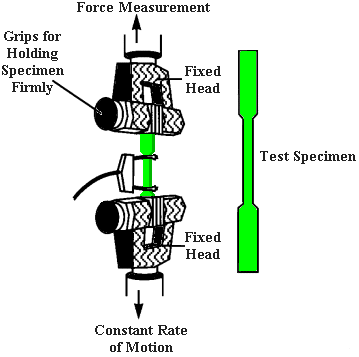J.M.Pearce (talk | contribs) m (→See Also) |
J.M.Pearce (talk | contribs) m (→See Also) |
||
| (One intermediate revision by the same user not shown) | |||
| Line 31: | Line 31: | ||
* [[MOST RepRap Build]] | * [[MOST RepRap Build]] | ||
* [[Life cycle analysis of distributed polymer recycling]] | * [[Life cycle analysis of distributed polymer recycling]] | ||
* [http://my3dmatter.com/influence-infill-layer-height-pattern/ What is the influence of infill %, layer height and infill pattern on my 3D prints?] | * [http://my3dmatter.com/influence-infill-layer-height-pattern/ What is the influence of infill %, layer height and infill pattern on my 3D prints?] | ||
* [http://st3p3d.com/blogs/3d-printing/14992261-a-few-ways-to-strengthen-3d-printed-parts A few ways to strengthen 3D printed parts] - STEP 3D (really nice summary of methods to strengthen parts) | * [http://st3p3d.com/blogs/3d-printing/14992261-a-few-ways-to-strengthen-3d-printed-parts A few ways to strengthen 3D printed parts] - STEP 3D (really nice summary of methods to strengthen parts) | ||
| Line 37: | Line 36: | ||
* [[Compatibility of 3-D printed devices in cleanroom environments for semiconductor processing]] | * [[Compatibility of 3-D printed devices in cleanroom environments for semiconductor processing]] | ||
* [[Mechanical Properties of Ultraviolet-Assisted Paste Extrusion and Postextrusion Ultraviolet-Curing of Three-Dimensional Printed Biocomposites]] | * [[Mechanical Properties of Ultraviolet-Assisted Paste Extrusion and Postextrusion Ultraviolet-Curing of Three-Dimensional Printed Biocomposites]] | ||
* [[Vacuum Outgassing Characteristics of Unpigmented 3-D Printed Polymers Coated with ALD Alumina]] | |||
---- | ---- | ||
* [https://www.sciencedirect.com/science/article/pii/S0142941818306093 FDM process parameters influence over the mechanical properties of polymer specimens: A review ] | * [https://www.sciencedirect.com/science/article/pii/S0142941818306093 FDM process parameters influence over the mechanical properties of polymer specimens: A review ] | ||
Revision as of 15:16, 29 July 2020
Source
- Nagendra G. Tanikella, Ben Wittbrodt and Joshua M. Pearce. Tensile Strength of Commercial Polymer Materials for Fused Filament Fabrication 3-D Printing. Additive Manufacturing 15: pp. 40–47 (2017). DOI: 10.1016/j.addma.2017.03.005 open access

Abstract
It is challenging to 3-D print functional parts with known mechanical properties using variable open source 3-D printers. This study investigates the mechanical properties of 3-D printed parts using a commercial open-source 3-D printer for a wide range of materials. The samples are tested for tensile strength following ASTM D638. The results are presented and conclusions are drawn about the mechanical properties of various fused filament fabrication materials. The study demonstrates that the tensile strength of a 3-D printed specimen depends largely on the mass of the specimen, for all materials. Thus, to solve the challenge of unknown print quality a two step process is proposed, which has a reasonably high expectation that a part will have tensile strengths described in this study for a given material. First, the exterior of the print is inspected visually for sub-optimal layers. Then, to determine if there has been under-extrusion in the interior, the samples are massed. This mass is compared to what the theoretical value is using the densities provided in this study for the material and the volume of the object. This provides a means to assist low-cost open-source 3-D printers expand the range of object production to functional parts.
See Also
- Mechanical Properties of Components Fabricated with Open-Source 3-D Printers Under Realistic Environmental Conditions
- The Effects of PLA Color on Material Properties of 3-D Printed Components
- Viability of Distributed Manufacturing of Bicycle Components with 3-D Printing: CEN Standardized Polylactic Acid Pedal Testing
- Open source rapid prototyping of OSAT
- RepRap Mechanical Testing Literature Review
- Tensile_test_protocol:_MOST
- Mechanical properties of 3-D printed truss-like lattice biopolymer non-stochastic structures for sandwich panels with natural fibre composite skins
- Environmental life cycle analysis of distributed 3-D printing and conventional manufacturing of polymer products
- Recyclebot
- Life cycle analysis of distributed recycling of post-consumer high density polyethylene for 3-D printing filament
- Recyclebot on RepRap wiki
- Mechanical testing of polymer components made with the RepRap 3-D printer
- Development and feasibility of applications for the RepRap 3-D printer
- Life cycle analysis of distributed polymer recycling
- Solar powered distributed customized manufacturing
- MOST RepRap Build
- Life cycle analysis of distributed polymer recycling
- What is the influence of infill %, layer height and infill pattern on my 3D prints?
- A few ways to strengthen 3D printed parts - STEP 3D (really nice summary of methods to strengthen parts)
- Chemical Compatibility of Fused Filament Fabrication-based 3-D Printed Components with Solutions Commonly Used in Semiconductor Wet Processing
- Compatibility of 3-D printed devices in cleanroom environments for semiconductor processing
- Mechanical Properties of Ultraviolet-Assisted Paste Extrusion and Postextrusion Ultraviolet-Curing of Three-Dimensional Printed Biocomposites
- Vacuum Outgassing Characteristics of Unpigmented 3-D Printed Polymers Coated with ALD Alumina
Future
- Toward improvement of the properties of parts manufactured by FFF (Fused Filament Fabrication) through understanding the influence of temperature and rheological behaviour on the coalescence phenomenon http://aip.scitation.org/doi/pdf/10.1063/1.5008034
- ANALYSIS OF EFFECT OF INTERNAL STRUCTURES ON TENSILE STRENGTH OF THE FDM PARTS http://acadpubl.eu/jsi/2017-115-6-7/articles/6/16.pdf





